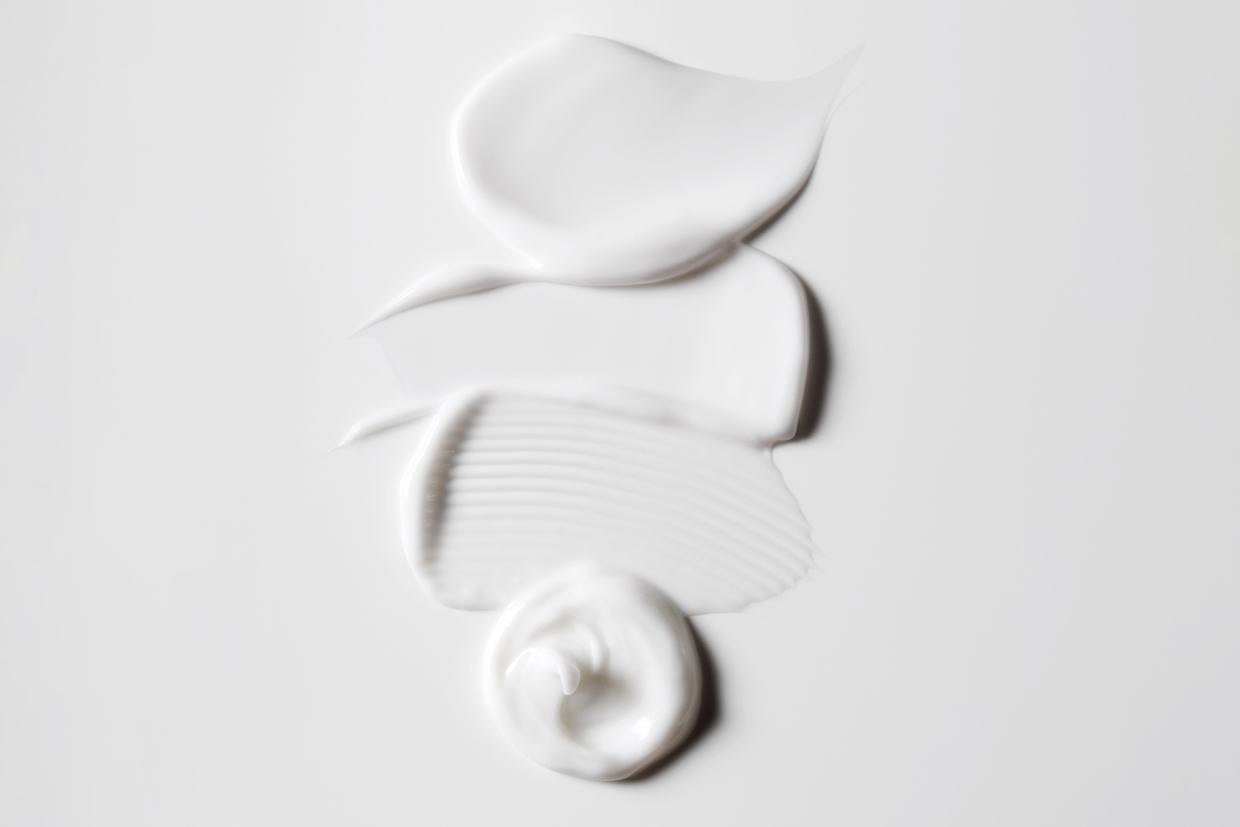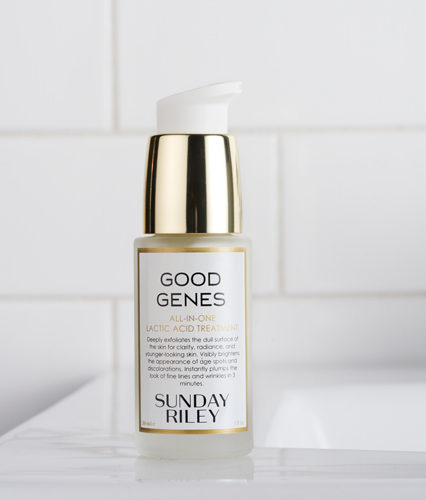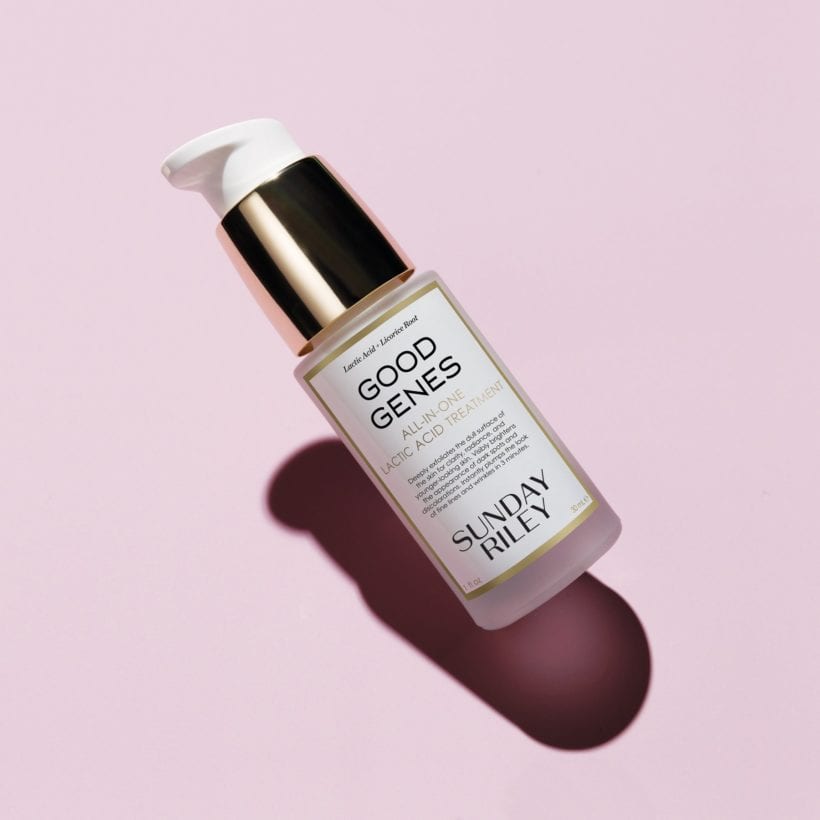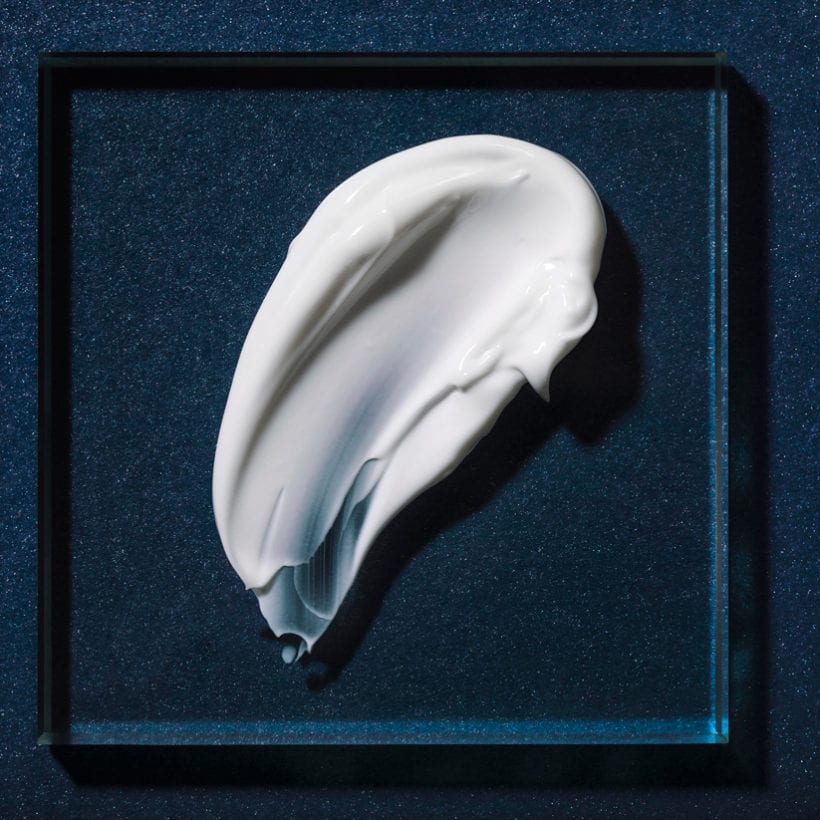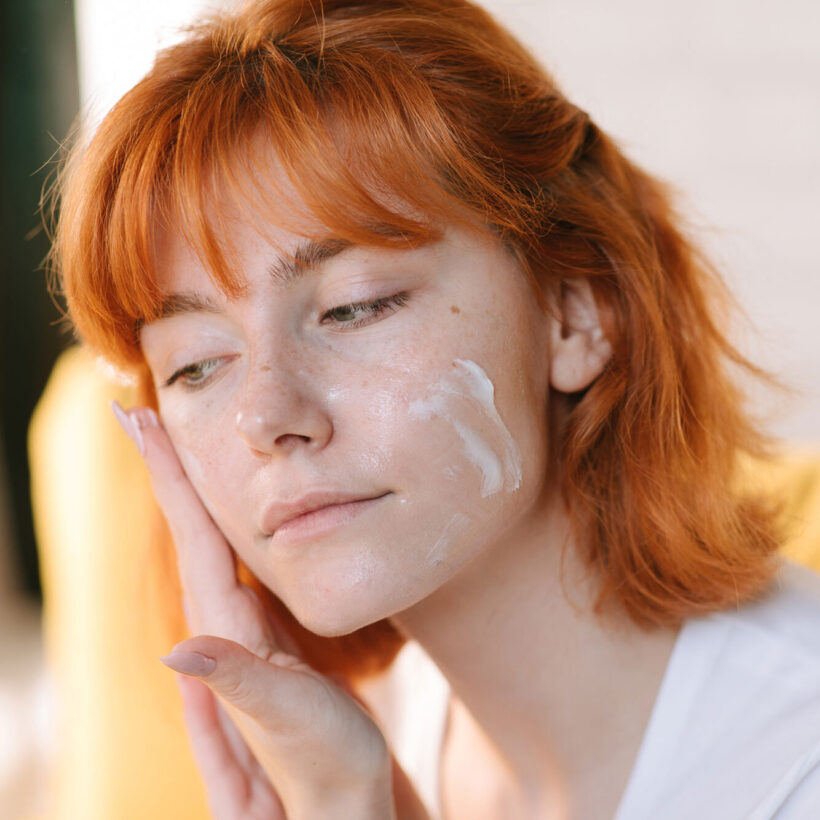It may sound scary and somewhat off-putting to layer an acid on the skin. But some of the acid ingredients used in skincare products and treatments are gentler on the skin than you may realize. Case in point: lactic acid. This milk- and plant-derived (the acid is created during the fermentation process when using plants) mild exfoliating agent is the perfect ingredient for transitioning skin from the harsh effects of winter into the more forgiving climate of spring. Not quite sure where to start when incorporating lactic acid into your skincare routine? No need to worry; it’s easier than you think.
Lactic Acid 101
Lactic acid is part of the alpha hydroxy acid (AHA) family. Lactic acid is the gentlest one of the bunch, unlike other AHAs, like glycolic and mandelic acids. Skincare experts and dermatologists often recommend it for gently exfoliating the skin, which is its main purpose. Secondarily, the acid can help fade away dark spots and fine lines, remove a buildup of pollutants and impurities and improve the look of fine lines and wrinkles by firming and thickening the skin. It’s a milder acid that is safe to use by all, especially those with sensitive skin, says Dr. Jeffrey Fromowitz, a board-certified dermatologist in Boca Raton, FL. Apart from other AHAs, lactic acid is a larger molecule, so it does not penetrate the skin as deeply, responsible for its gentle action.
A long-used skincare ingredient, lactic acid makes it less irritating than other acids and a good choice for dry skin, says Dr. Howard Sobel, a board-certified dermatologist in New York City. “It’s also beneficial for sensitized skin that feels delicate from winter’s harsher climates and environmental factors, like low humidity and indoor heating,” he adds.
How It Works
In addition to being a gentle exfoliant, lactic acid also acts as a humectant to draw water into the skin, explains Dr. Rebecca Marcus, a board-certified dermatologist in Dallas. “Sometimes, moisturizers are unable to penetrate dry skin because of skin flakes that get in the way. Yet lactic acid addresses both issues simultaneously by exfoliating that top layer and then hydrating deeper layers,” she says.
Since lactic acid is one of the gentler acids to choose from, it works differently than other acids or exfoliating agents. “Lactic acid is an alpha hydroxy acid (AHA), so it works primarily on the surface of the skin for gentle exfoliating action,” Dr. Sobel explains. Besides topical skincare products, lactic acid is a star ingredient in many professional chemical peels.
Year-round Exfoliation Essentials
It is critical to exfoliate year-round, and without doing so, the skin can become dry, itchy, and cracked. “Throughout the day, there is a buildup of natural oils, environmental pollutants, and dirt, which blocks pores and contribute to breakouts and irritation, especially in warmer months,” Dr. Jordan Wang, a board-certified dermatologist and medical research director in New York City explains. Gentle, regular exfoliation acts as a deep cleanse for the skin, working double duty to unclog the pores. Plus, the more dead skin cells and dirt that accumulate on the skin’s surface, the more likely it is for the skin to start to appear dull and without that glow and sparkle. “Lactic acid can increase skin cell turnover and healthy levels of ceramides to create a balanced skin barrier,” says Dr. Wang.
“During the warmer months, we sweat more, and in combination with makeup and pollution, this can lead to an increase in breakouts and blemishes,” says Dr. Sobel. “Plus, regular exfoliation boosts collagen production to promote a radiant glow while removing the dry skin cells that can interfere with treatments, skincare potency, and absorption,” he adds. The best way to tackle year-round exfoliation is to use a mild yet adaptable exfoliating agent like lactic acid.
Why Lactic Acid Should Be a Staple in Your Skincare Routine
Regardless of your skin type, tone, current aging concerns, or other skin challenges you face, there’s a place in everyone’s routine for lactic acid. “It is particularly good for normal, dry, dehydrated, and sensitive skin,” says Dr. Sobel.

No product formulation is off-limits with the ingredient — you can find lactic acid in everything from cleansers to exfoliating serums and even creams and masks. Dr. Wang says cleansers are generally more favorable and well-tolerated since they briefly contact the skin before rinsing off. However, he suggests pairing the acid with a nourishing moisturizer to gain the benefits fully.
Because of its exfoliating effects, lactic acid can help fade darker blemishes and unclog pores to reveal naturally healthy, brighter skin, says Dr. Wang. Plus, the acid is excellent for acne-prone skin as it does have antibacterial properties, says Dr. Marcus. In addition to eradicating blemishes, lactic acid lotions can help reduce keratosis pilaris (KP), small patches of bumpy skin on the legs, arms, and elsewhere on the body — for a one-two punch, try pairing it with salicylic acid for more extreme cases.
Besides all the skin benefits that lactic acid offers, it’s a great skincare gateway ingredient for novice skincare users to incorporate without concern for reactions, redness, or sensitivity. Dr. Sobel adds that lactic acid works well with other skin treatments and exfoliating acids (like salicylic and glycolic) for more intense treatment when addressing fine lines and wrinkles, dark spots, clogged pores, and breakouts. In addition, Dr. Marcus says that hyaluronic acid (another humectant and hydrator) is a good partner for lactic acid, which will boost the acid’s glow-inducing effects. “Just be careful when using it with other exfoliants, such as glycolic acid and retinol, as some combinations could be too much exfoliation for the skin,” she warns.
We only recommend products we have independently researched, tested, and loved. If you purchase a product found through our links, Sunday Edit may earn an affiliate commission.
